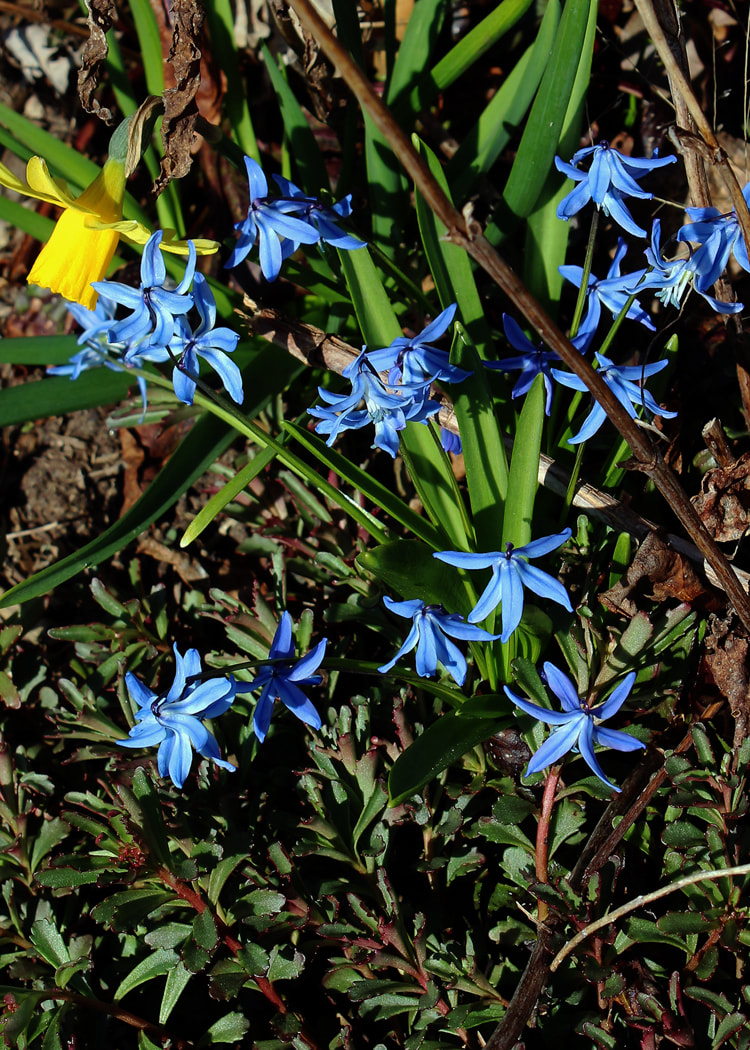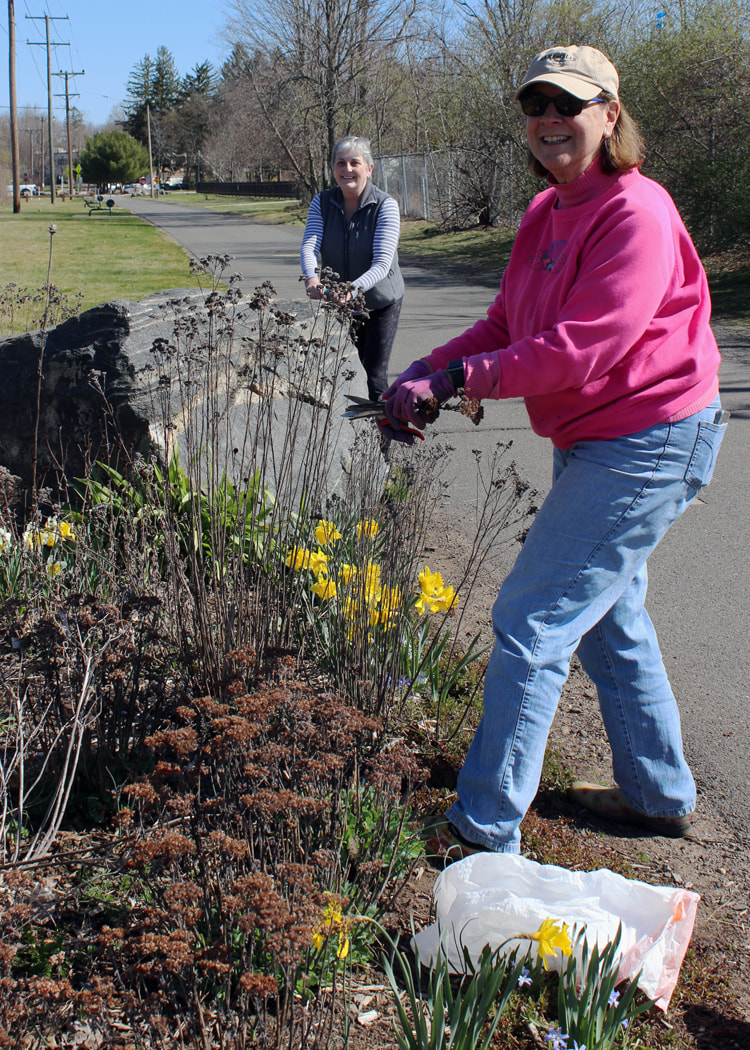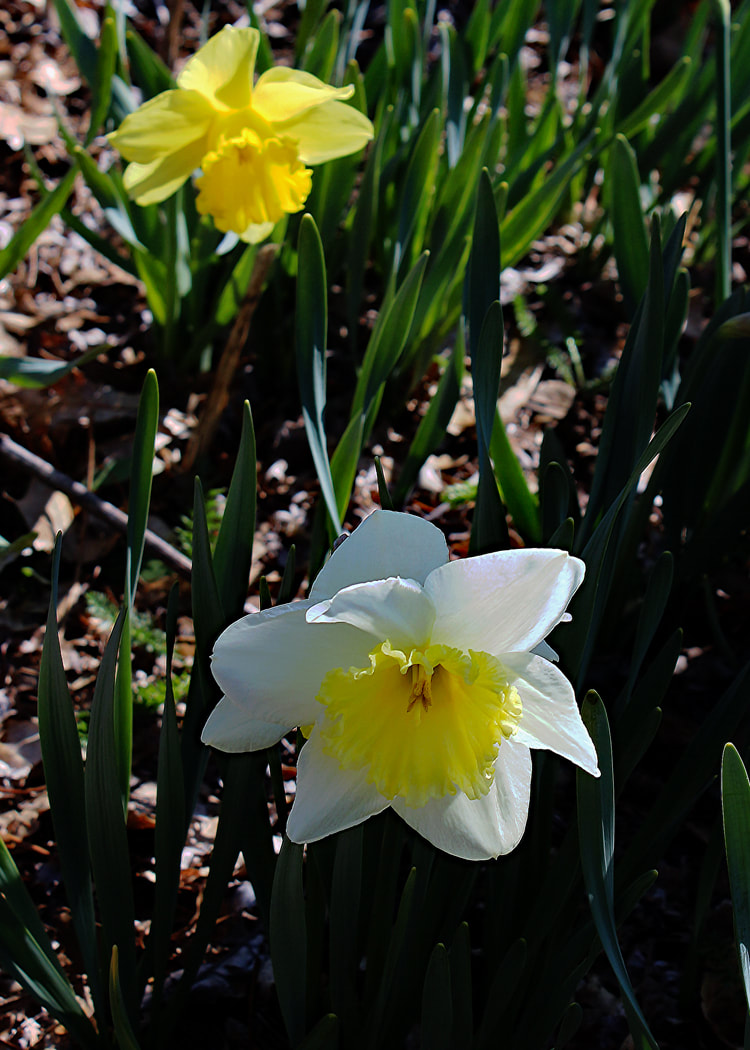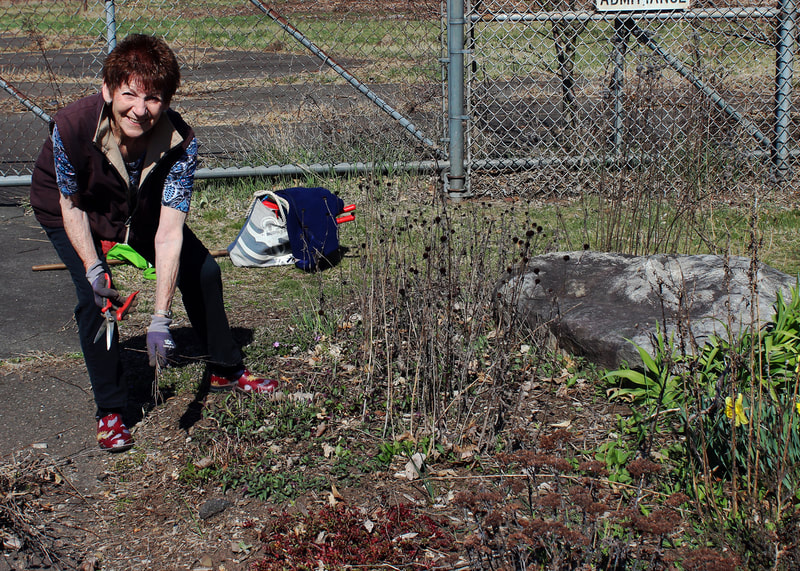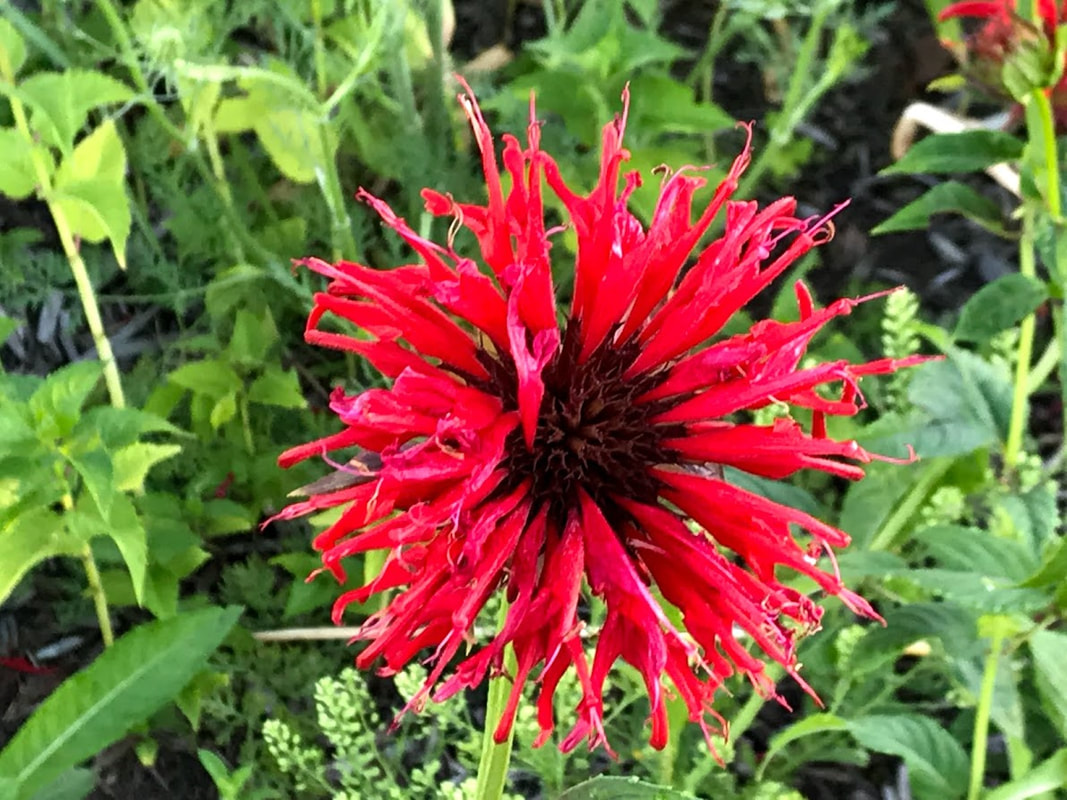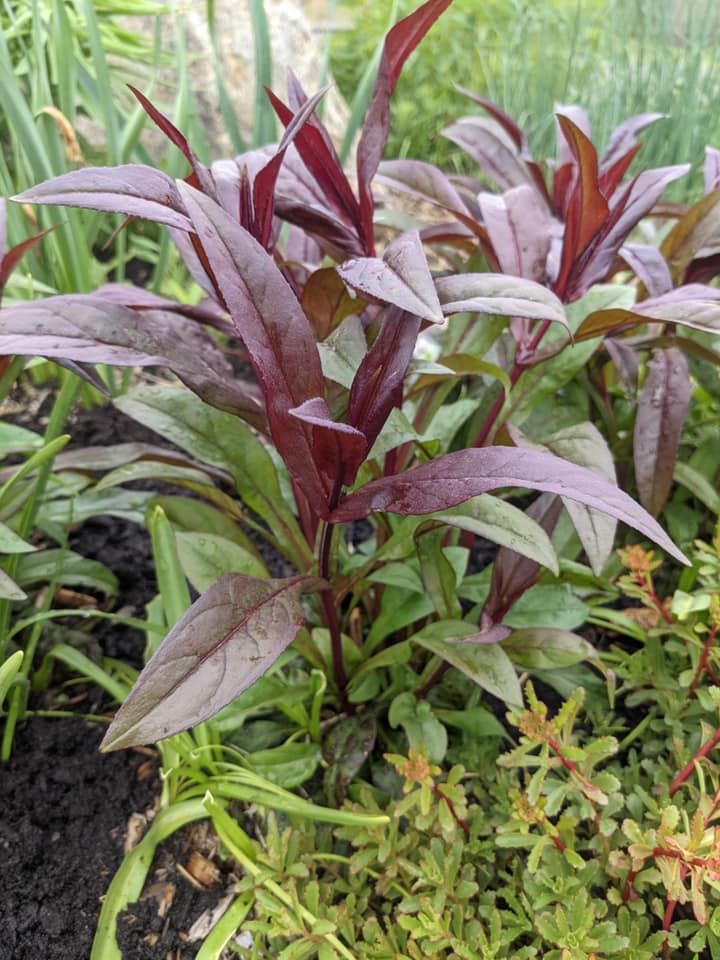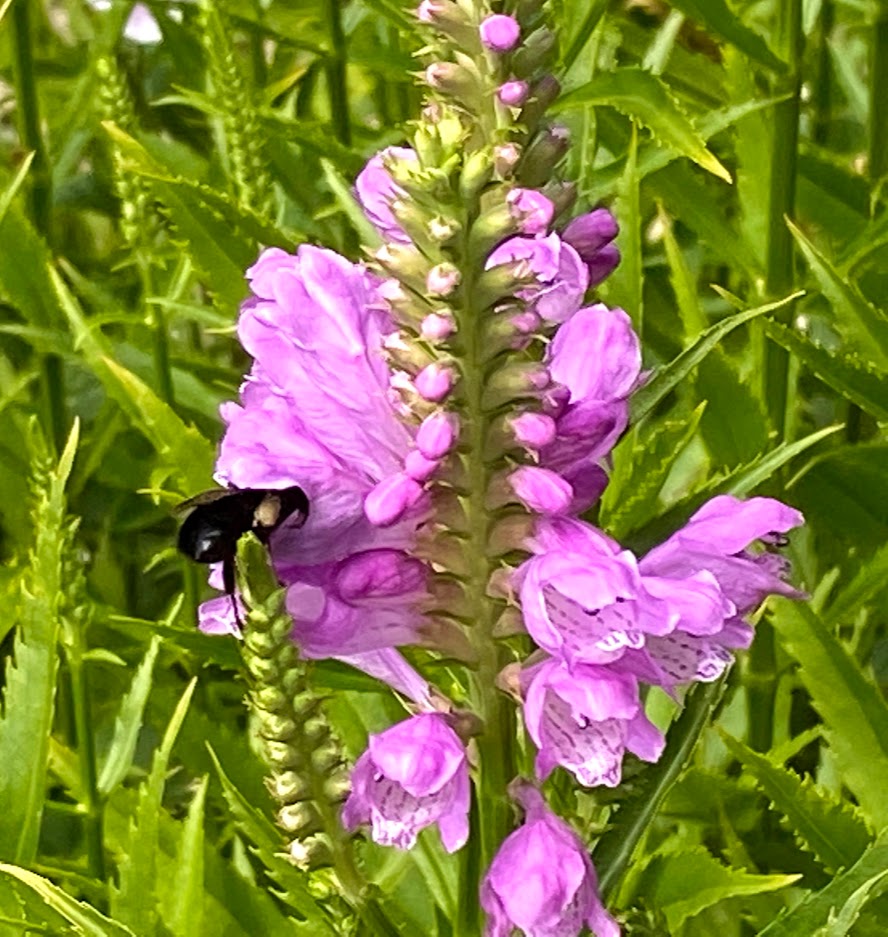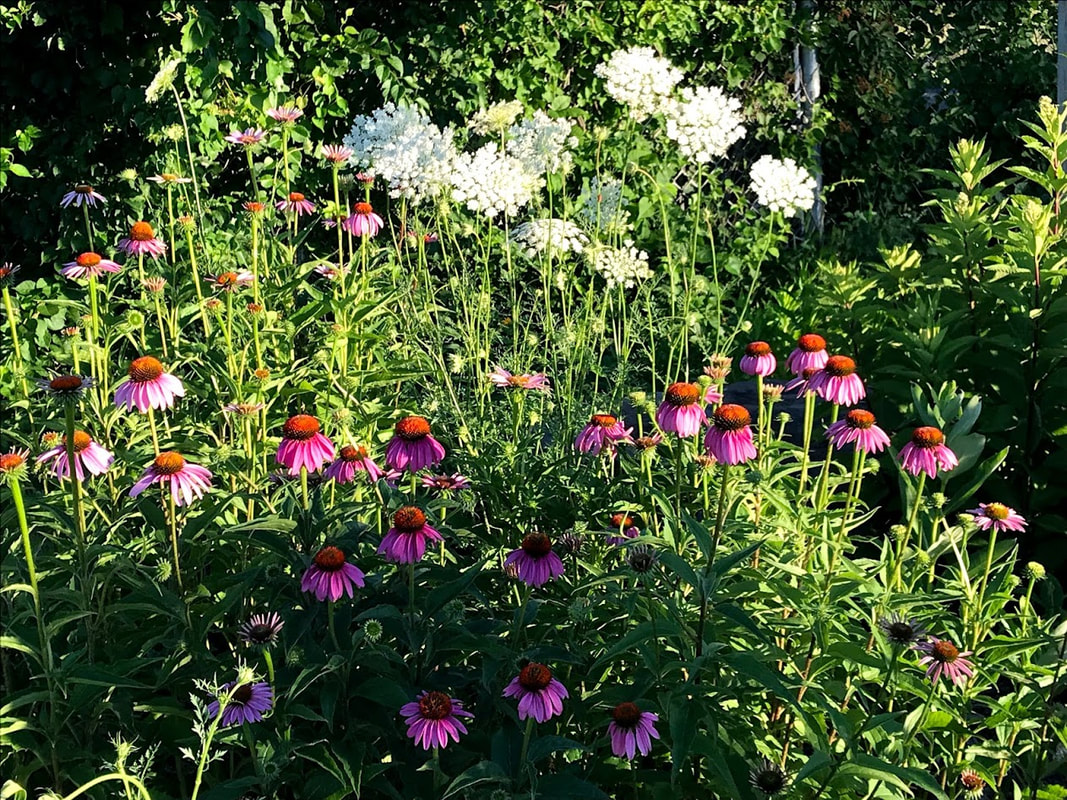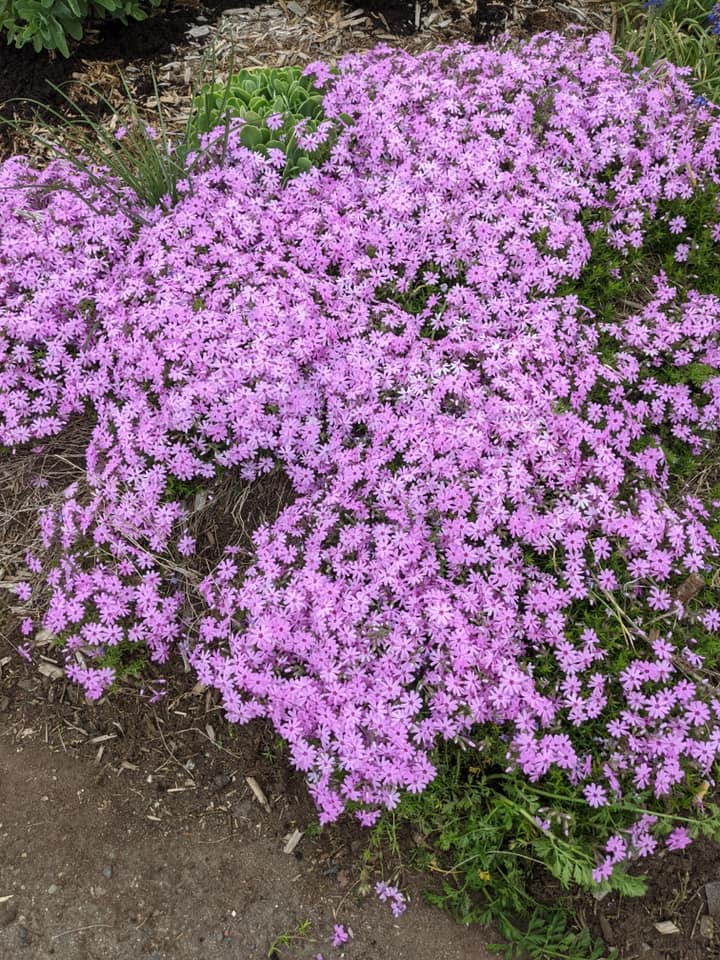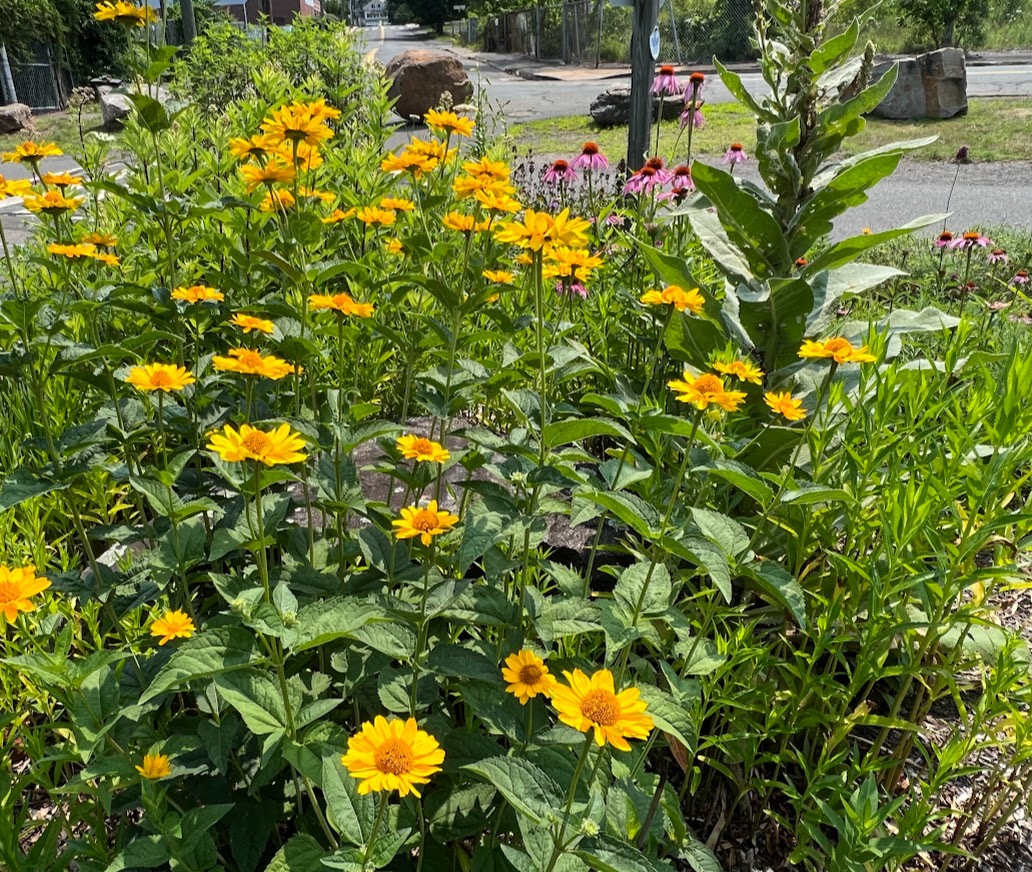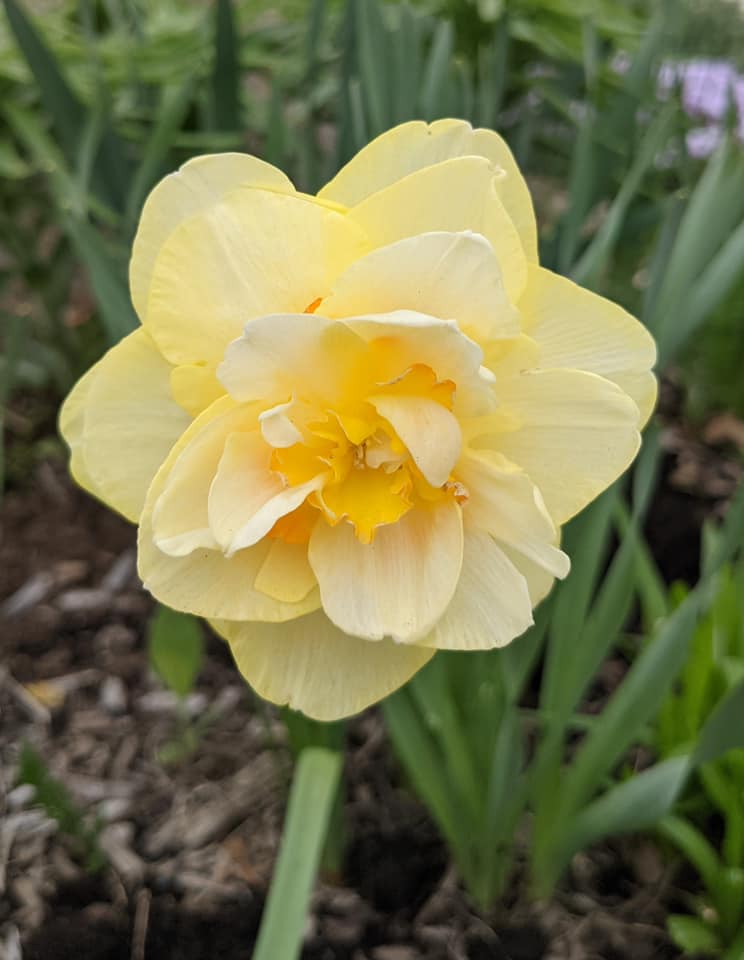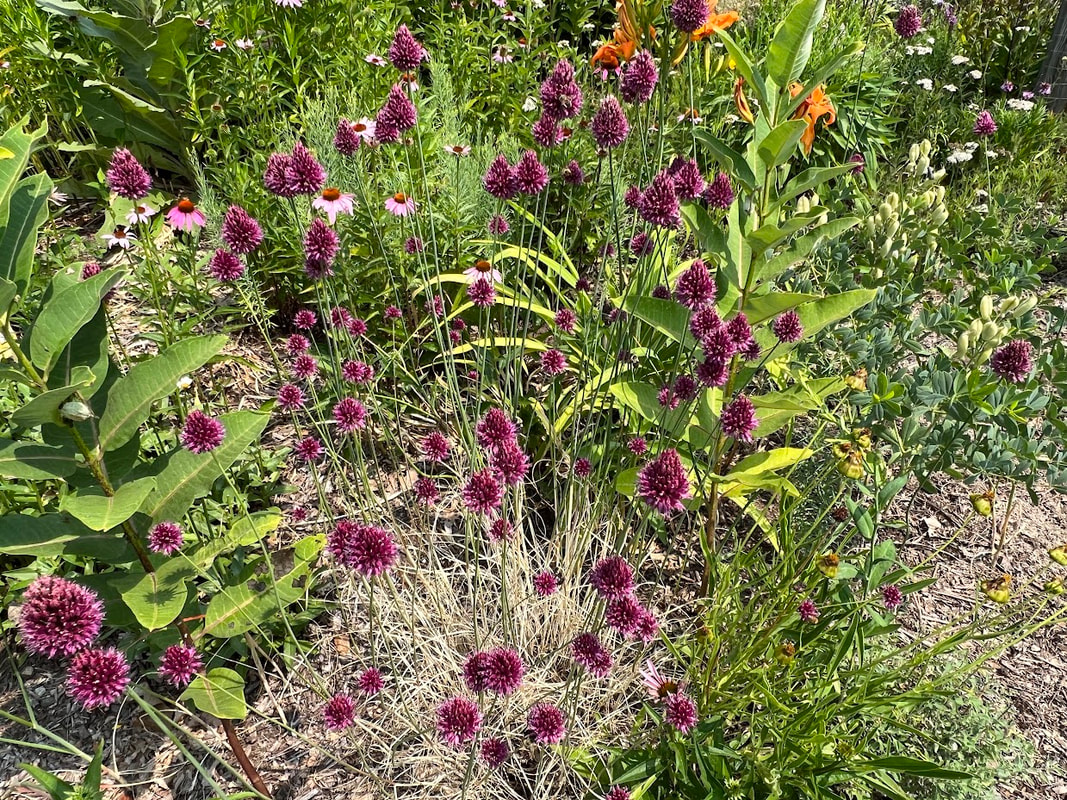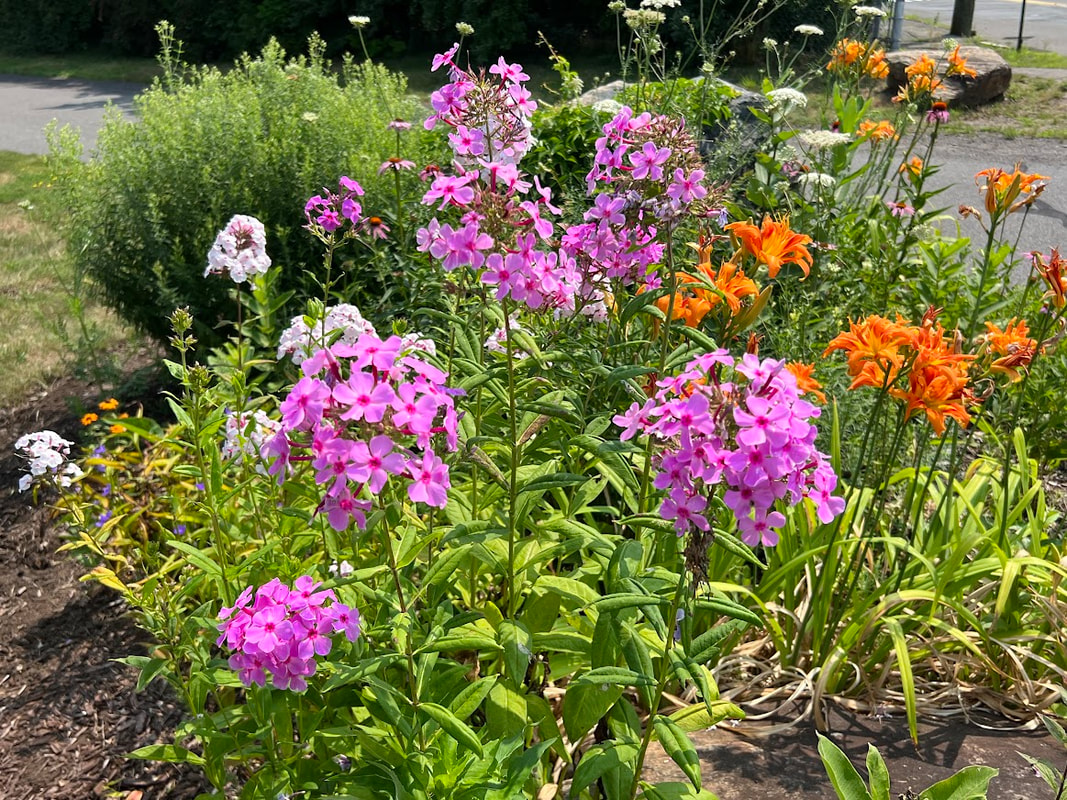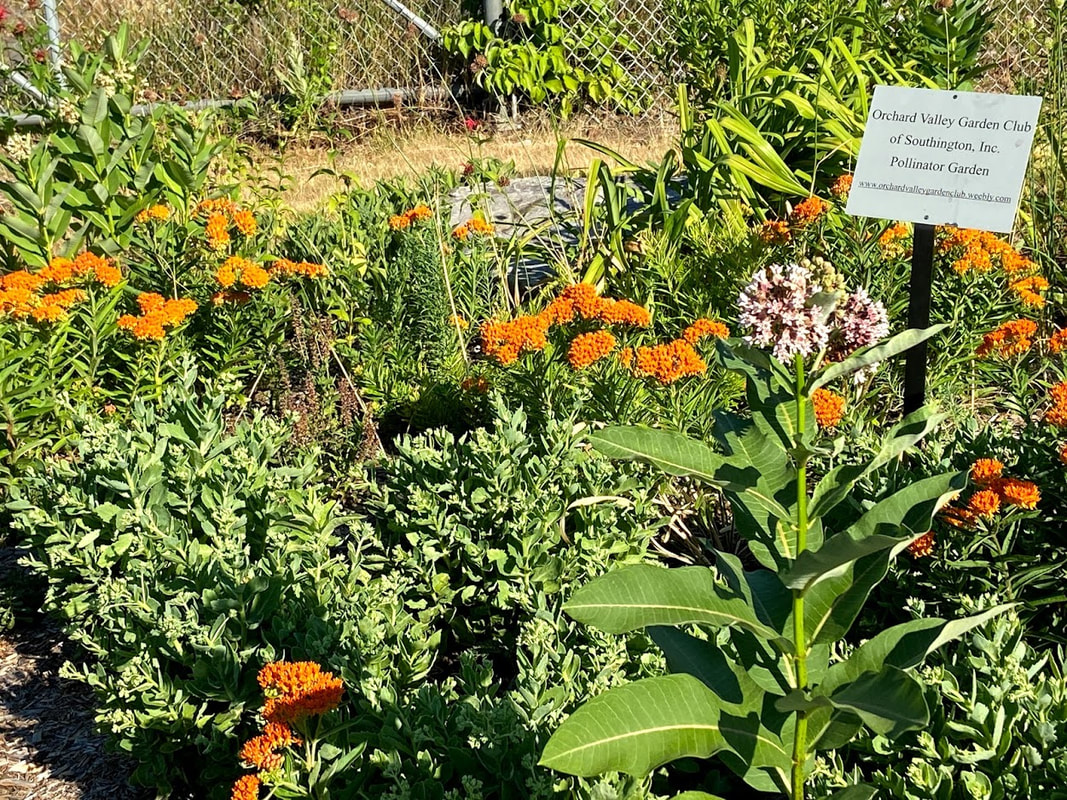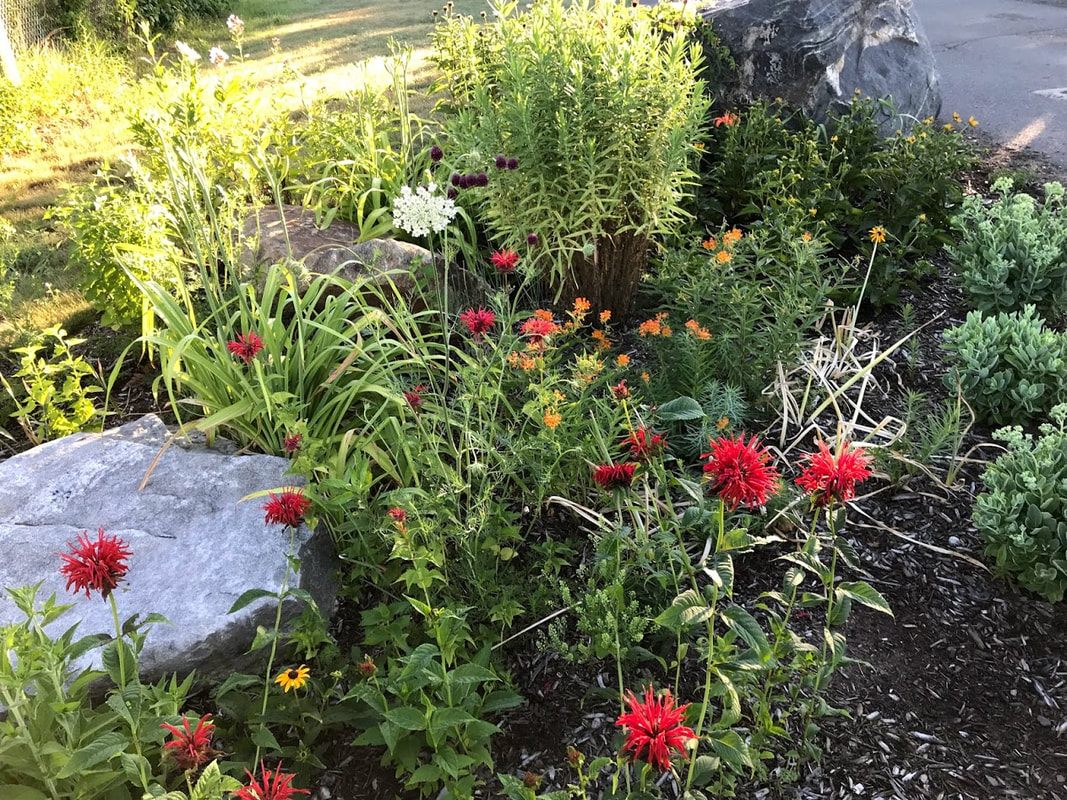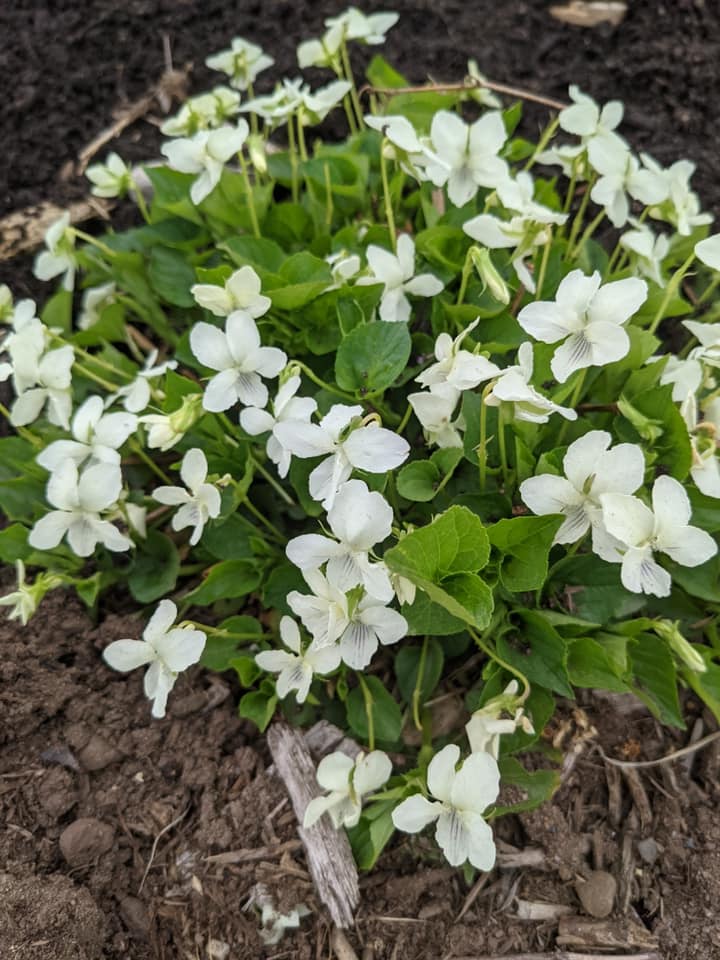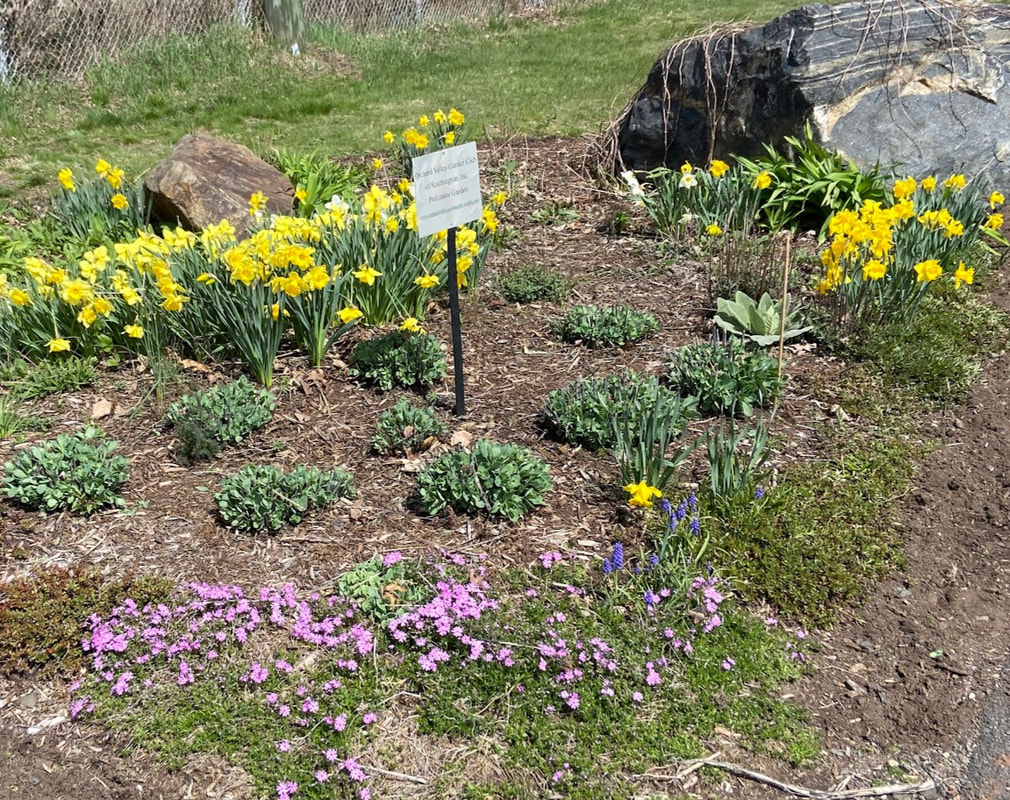|
Visit the Orchard Valley Garden Club Pollinator Garden on the linear trail at High Street. If you walk the linear trail at High Street in Southington, you will see the result of the latest project by the Orchard Valley Garden Club. A pollinator garden has been planted along the trail to provide nectar and host plants for bees, butterflies and other pollinators. The garden is intended to both beautify the trail and to nurture pollinators which are currently in decline from changing habitats, invasive species, parasites, and widespread pesticide use. As pollinators play a vital part in the food supply for both humans and wildlife, it is critical that gardeners do whatever they can to protect and support pollinator populations. The project began in 2016 with the removal of sod, weeds, and invasive plants such as Mugwort and Oriental Bittersweet. After many weeks of diligent weeding by OVGC members, pollinator friendly plants were planted and the area was mulched. The plants, mostly from the gardens of our members, were carefully chosen to be native, friendly to a variety of pollinators, and suitable for full sun and dry conditions since there is no water source near the trail. Members maintain the garden with weekly weeding and watering during dry spells. Although the garden is in its early stages, we have already noted the presence of bees and monarch butterfly caterpillars. You can support pollinators at your own home or place of business by taking a few simple steps. First and most importantly, avoid pesticide use. Particularly harmful are broad spectrum insecticides which kill multiple bug species, and systemic insecticides which cause all plant tissues to be toxic to pollinators. Let a small area of your yard go wild, allowing plants to naturalize. Leave some weeds, fallen branches, and garden wastes to serve as nesting sites and shelter for pupating larvae. Planting Milkweed provides both nectar for Monarch butterflies and food for their caterpillars. If you have room and enough sun for a flower garden, choose native plants and plan for continuous bloom to provide a food source from spring to fall. Place plants in larger groups rather than singly to create a target for pollinators. If space does not permit a garden, flowering plants in pots and window boxes will also benefit pollinators. Butterflies also appreciate rocks on which to warm themselves in the sun and a consistent water source such as a sandy puddle or a shallow dish set on the ground. Many gardeners taking small steps such as these can make a difference in the survival of our pollinators. A partial list of plants at the High Street garden, by bloom time: Spring Narcissus-Daffodil, Phlox subulata-Creeping Phlox Early Summer Iris sibirica- Siberian Iris, Allium shoenoprassum-Chives, Campanula glomerate-Bellflower, Tradescantia virginiana-Spiderwort, Oenothera- Evening primrose, Trifoliate pratense-Red Clover, Lychnis coronaria-Rose campion, Sedum-groundcover Stonecrop Salvia-perennial Salvia, Asclepias syriaca-Common Milkweed, Asclepias tuberosa-Butterfly Weed Summer Echinacea pupurea- Purple Coneflower, Verbascum-Mullein, Hemerocallis-Daylily, Monarda didyma -Bee Balm, Silybum-Thistle Daucus carota-Wild Carrot, Phlox paniculata- Garden Phlox, Agastache-Anise Hyssop, Achillea millefolium- Yarrow, Rudbeckia-Black Eye Susan Liatris spicata-Gay Feather, Physostegia-Obedient Plant Fall Eutrochium purpureum-Joe Pye Weed, Solidago-Goldenrod, Aster, Physostegia virginiana-Obedient Plant www.pollinator.org, www.xerces.org, www.monarchjointventure.com, www.nwf.org/gardenforwildlife , http://millionpollinatorgardens.org www.ctgardenclubs.org |
